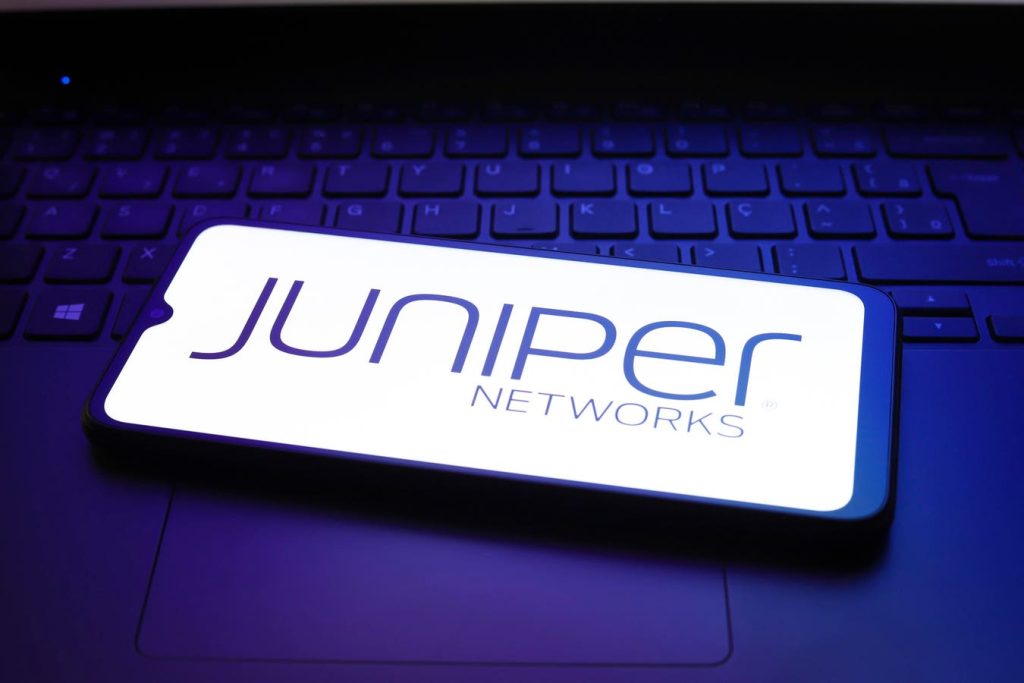Juniper Networks: A Pre-Acquisition Overview and Financial Performance
Juniper Networks, a prominent player in the networking industry, offering a comprehensive suite of products including routers, switches, network security solutions, and software-defined networking technology, has seen a significant stock surge of nearly 27% in 2024, outperforming its peer Microsoft’s 14% growth over the same period. This impressive performance comes amidst the backdrop of a pending acquisition by Hewlett Packard Enterprise (HPE), announced in January 2024, for $40 per share in cash, valuing Juniper at approximately $14 billion. The companies are currently navigating regulatory approvals, including discussions with the U.S. Department of Justice to address potential antitrust concerns, and anticipate finalizing the merger in early 2025. This acquisition is strategically positioned to combine HPE’s existing networking portfolio with Juniper’s advanced AI-driven networking solutions, aiming to create a robust, unified, and cloud-native offering to cater to the growing demand in the market.
Juniper’s recent Q3 financial results offer a mixed picture. While net revenues reached $1.33 billion, this figure represents a 5% year-over-year decrease, though it marks a 12% sequential increase. The company demonstrated improved profitability with a GAAP operating margin of 7.1%, up from 6.3% in Q3 2023 and 3.8% in Q2 2024. GAAP net income saw a year-over-year increase of 22%, reaching $92.6 million, resulting in diluted net income per share of $0.28. A particularly bright spot in the quarter was the substantial growth in product orders, especially within the cloud segment, attributed to the rising demand for AI-powered networking solutions. This signals a potential area of strength for Juniper moving forward.
Despite the positive developments in orders and profitability, Juniper’s financial position reveals certain challenges. While the company boasts a healthy cash and investments balance of $1.6 billion, operating cash flows have experienced a decline year-over-year. Furthermore, in anticipation of the HPE merger, Juniper has declared a $0.22 per share dividend but has temporarily suspended its share repurchase program. A key area of observation going forward is the performance of Juniper’s AI-driven enterprise business, which represents 45% of its total revenue. This division, focusing on leveraging AI and machine learning to enhance user experiences and simplify network administration, has witnessed a 13% decline in revenue for the first nine months of the year, highlighting a potential area of concern.
Long-Term Prospects and Valuation Considerations for Juniper Networks
Looking ahead, Juniper Networks is poised to benefit from several key industry trends. The increasing demand for high-speed 400G Ethernet network equipment, particularly from cloud and hyperscaler customers, presents a significant growth opportunity. The company’s commitment to innovation and its strategic focus on AI-driven solutions position it well to capitalize on emerging market demands. Furthermore, the planned merger with HPE holds the potential to create synergistic benefits, expanding its market reach and product portfolio. However, despite these positive factors, the current stock price is deemed to be fairly valued.
A revised valuation of $37 per share has been established, based on an expected EPS of $1.67 and a P/E multiple of 22.2x for the fiscal year 2024. This valuation takes into account the current market conditions, the company’s financial performance, and the anticipated future growth prospects. A crucial aspect of assessing Juniper’s future success lies in the performance of its AI-driven enterprise solutions, which will be closely monitored. The ability to successfully integrate this technology into its offerings and gain traction in this competitive market will be essential to driving growth.
Competitive Landscape and Peer Comparison
In evaluating Juniper’s performance and prospects, it’s essential to consider the competitive landscape and compare its performance with its peers. Comparing Juniper’s metrics with those of other companies in the networking industry provides valuable insights into its relative strengths and weaknesses. Analyzing metrics such as revenue growth, profitability margins, market share, and innovation can offer a more comprehensive understanding of Juniper’s position within the market. This comparison also allows for a more informed assessment of the potential impact of the HPE acquisition and how the combined entity might stack up against competitors in the future. Benchmarking against peers can also inform strategic decision-making and identify areas for improvement or potential competitive advantages.
Further Analysis and Investment Considerations
For a more in-depth understanding of Juniper Networks’ financial performance, it’s valuable to analyze its key revenue streams and their historical trends. This analysis can shed light on the company’s dependence on specific product lines and its ability to adapt to evolving market demands. Examining the growth trajectory and contribution of each revenue stream can also offer insights into the long-term sustainability and potential risks associated with its business model. Furthermore, considering the prevailing market conditions, including technological advancements, competitive pressures, and regulatory developments, is essential for making informed investment decisions. By analyzing Juniper’s financial performance, competitive landscape, and future prospects, investors can gain a comprehensive understanding of the company’s potential and make informed decisions about its suitability for their investment portfolios. This holistic approach, combined with peer analysis and an understanding of market trends, provides a robust framework for evaluating Juniper Networks as an investment opportunity.

